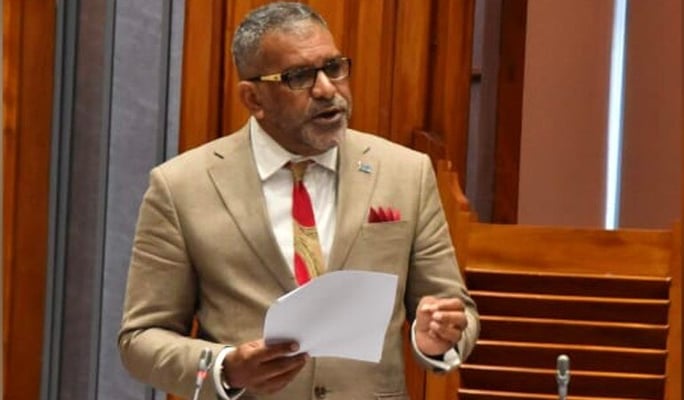Fiji’s remittances highest last year

Fiji’s remittances received last year was the highest ever, says Minister for Commerce, Trade, Tourism and Transport Faiyaz Koya.
“Currently, Pacific island countries combined are among the largest export destinations for Fiji, approximately 40 percent of total exports of $894.6 million(US$426.4 million) in 2019 was destined for Pacific island countries,” he said.
“And better rules of entry into the PIC markets essentially mean more Fijian exports in the region and strengthens Fiji’s position as a trade up.
“We will be able to attract investment in manufacturing in warehouse facilities as a market will actually increase to over 10 million odd people.”
Koya said labour mobility was also a very important contributor to the Pacific economy and according to the World Bank Group, workers on the Pacific Labour Mobility schemes send approximately AUD$9,000 (FJD$13,700) back to their families.
“This is equivalent to three years wages in many countries, so remittances such as these are vital to support livelihoods.
“In Fiji, remittances over the last 10 years averaged to about $433.2 million (US$206.5 million), equivalent to 4.7 percent of GDP with more than about 60 percent of the funds coming from Australia, New Zealand and the U.S.
“Fiji’s remittances received last year were the highest ever and that was standing at $652.75 million(US$311.1 million) which is an annual increase of 11 percent.
“The trade ministers, Speaker sir, have collectively agreed to enhance this labour mobility arrangements and last week, the labour mobility reference group consisting of officials from the region met to discuss the comprehensive review of the labour mobility schemes in the region, and addition to these, that region is working on strengthening our regional trade data through the establishment of a regional trade observatory and regional infrastructure strategy has also been developed to guide the region’s collective efforts in building and strengthening the development of our factors of production in the Pacific.
“These are some of the collective efforts that the region is taking to mount a recovery and to create a stronger foundation that will enable us to withstand future extended shocks and builds on resilience.
As a region, we are actually future-proofing ourselves not just looking at short- term gains, but long-term stability and sustainability,” he said.
PACNEWS
Fiji’s remittances received last year was the highest ever, says Minister for Commerce, Trade, Tourism and Transport Faiyaz Koya.
“Currently, Pacific island countries combined are among the largest export destinations for Fiji, approximately 40 percent of total exports of $894.6 million(US$426.4...
Fiji’s remittances received last year was the highest ever, says Minister for Commerce, Trade, Tourism and Transport Faiyaz Koya.
“Currently, Pacific island countries combined are among the largest export destinations for Fiji, approximately 40 percent of total exports of $894.6 million(US$426.4 million) in 2019 was destined for Pacific island countries,” he said.
“And better rules of entry into the PIC markets essentially mean more Fijian exports in the region and strengthens Fiji’s position as a trade up.
“We will be able to attract investment in manufacturing in warehouse facilities as a market will actually increase to over 10 million odd people.”
Koya said labour mobility was also a very important contributor to the Pacific economy and according to the World Bank Group, workers on the Pacific Labour Mobility schemes send approximately AUD$9,000 (FJD$13,700) back to their families.
“This is equivalent to three years wages in many countries, so remittances such as these are vital to support livelihoods.
“In Fiji, remittances over the last 10 years averaged to about $433.2 million (US$206.5 million), equivalent to 4.7 percent of GDP with more than about 60 percent of the funds coming from Australia, New Zealand and the U.S.
“Fiji’s remittances received last year were the highest ever and that was standing at $652.75 million(US$311.1 million) which is an annual increase of 11 percent.
“The trade ministers, Speaker sir, have collectively agreed to enhance this labour mobility arrangements and last week, the labour mobility reference group consisting of officials from the region met to discuss the comprehensive review of the labour mobility schemes in the region, and addition to these, that region is working on strengthening our regional trade data through the establishment of a regional trade observatory and regional infrastructure strategy has also been developed to guide the region’s collective efforts in building and strengthening the development of our factors of production in the Pacific.
“These are some of the collective efforts that the region is taking to mount a recovery and to create a stronger foundation that will enable us to withstand future extended shocks and builds on resilience.
As a region, we are actually future-proofing ourselves not just looking at short- term gains, but long-term stability and sustainability,” he said.
PACNEWS









Leave a Comment